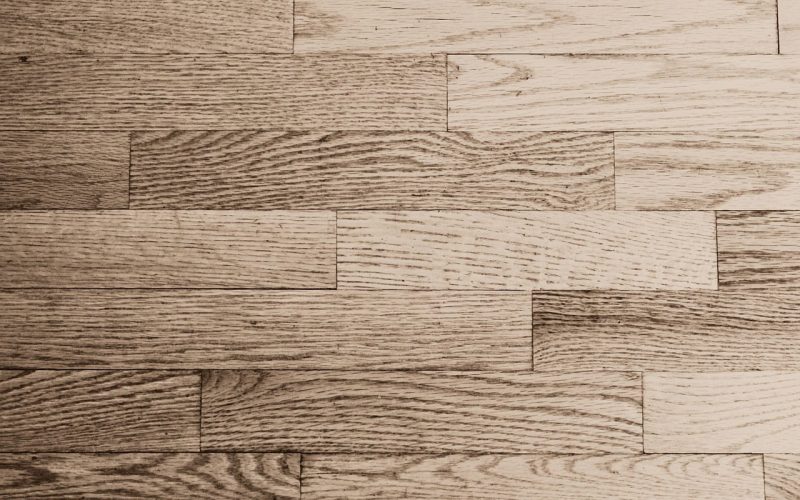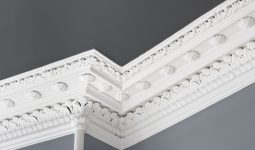Not every wood stain is the same; in fact, there are seven different types of wood stains available for your wood staining projects, including a deck, woodworking tasks, and more.
We list and thoroughly explain each option for wood stain. So, what are wood stains? Wood stains are made of pigments or dyes dissolved in a vehicle, also known as a solvent.
The standard transportation media are water, distilled petroleum, alcohol, or a finishing agent like lacquer, polyurethane, shellac, or varnish.
Some vehicles have suspended stains because they are not true solvents, so you must mix them before applying them.
However, while larger pigment molecules are more likely to suspend the vehicle, smaller molecules like dyes typically dissolve.
As a rule, the stain does not penetrate the wood’s surface as profoundly as paint, so it usually fades to its original color over time as the wood ages.
Furthermore, different wood stains may share some characteristics depending on the formulation and brand.
For instance, lacquer stains may contain natural pigments, and water-based stains may contain petroleum solvents.
Please read on as we now talk about the different types of wood stains that are available.
1. Oil Stain
Most people think of oil stains when they hear “wood stain.” It is the most popular wood stain that is sold commercially.
It gives you some breathing room to clean up spills or spread out irregularities, resulting in a more even stain when you add all-natural, non-toxic linseed oil. It is ideal for big projects because you don’t have to control every brushstroke to prevent splotching.
Aliphatic hydrocarbons, also known as mineral spirits or paint thinner, can be used to clean up or thin out oil stains. Oil stains may contain pigments, dyes, or both. Any finish, excluding water-based ones, can be used over an oil stain.
Furthermore, an oil stain coat takes 1-2 hours to dry. Wait at least two hours before applying the second coat and eight hours before finishing.
One of the distinctive qualities of oil-based stains is their penetration. They frequently last long and saturate the wood grain sincerely—best for decks and wooden outdoor furniture.
In addition to the dyes that give oil-based stains their distinctive colors, they may also contain synthetic pigments. Iron oxide is the most typical synthetic pigment used in oil stains.
These oil stains are frequently called wiping stains and have a heavier texture with less wood penetration.
2. Varnish
In place of oil, varnish stain uses a binder of varnish—often polyurethane varnish. Because varnish dries solidly, you can apply an even coat without removing an extra stain.
A finishing coat is unnecessary because the stain, thanks to the varnish content, is the finishing coat.
Also, pour a small amount of stain onto a scrap piece of wood and watch if it hardens or evaporates to determine whether the container is oil-based or varnish-based.
Even if the excess isn’t removed, a coat of varnish stain applied unevenly may still appear splotchy and require additional coats.
Surfaces already stained, worn, or scuffed, as are small projects, are ideal for varnish stains.
Moreover, when you use a varnish stain, you won’t necessarily need to apply another finishing because it dries into a hard, protective finishing coat.
To enhance its sheen, you can apply a varnish stain over a finished, stained wooden surface (like indoor furniture). As a finishing coat, the varnish stain will be used.
3. Water-Based Stain
Water-based stains are most natural, least irritating, and least likely to irritate your skin, eyes, or windpipe when you spend time around them.
It is best to finish the project with a water-based (waterborne) finish because you can clean it up with water.
If you don’t have at least a week to wait for it to dry, avoid covering oil or varnish stains with water-based polyurethane or resinous finishes.
The drawback of water-based stains is that they can be challenging to apply. Water raises the wood’s grain, changing the texture. Also, you can prevent this effect by pre-wetting the wood and sanding off the raised grain, but it takes time.
Water dries out very quickly. Also, if the excess stain isn’t immediately removed, the finished coat might be splotchy.
Add propylene glycol or lacquer retarder to delay the drying process, dulling the stain’s color. If not, divide the task into manageable chunks and remove any excess.
4. Gel Stain
Gel stains typically contain oil, but they have a mayonnaise-like thickness. Applying gel stains can be messy, but they are the best at coating without smudges.
Don’t undervalue the significance of this trait. A second coat won’t help with a splotchy stain. Typically, the entire coat must be removed by sanding. This is a time-consuming fix.
If you must stain pine, consider gel stain seriously. Pine is renowned for being challenging to stain without blotting and splitting.
For the best results, consider using a washcoat or wood conditioner before staining. This is one of the different types of wood stains.
5. Lacquer Finish
Lacquer stains do not contain actual lacquer. Instead, a type of quick-drying varnish, typically made of xylene and ketones, transports them.
These stains have acquired their names because you can combine them with lacquer to create a pigmented lacquer.
These stains are a favorite among professional woodworkers because they dry quickly in as little as 15 minutes.
Moreover, a skilled hand is required because mistakes are likely due to the quick drying time.
Also, when working on a large project, think about working in a two-person team, with one person applying the stain and the other taking off the excess.
The solvents in lacquer stain quickly vaporize, giving off a strong smell. Apply in a well-ventilated space. Consider donning a safety mask as well.
6. Water-Soluble Dye Stain
This kind of stain is offered for sale as a powder. Just add water, just like Kool-Aid. It was created as fabric dyes but later used as wood stains, hence the name “aneline dyes.” Because of its many rich color options and ease of use, boutique woodworkers adore it.
There are no set rules, but the usual powder-to-water ratio is one ounce per quart. You can adjust the appearance of your dye by adding more or less water through trial and error.
The dye dissolves more easily in hot water. However, the minerals calcium, sodium, and magnesium that may be present in tap water can change the hue of your dye. Distilled water causes the least amount of color distortion.
Even in the darkest tones, water-soluble dye stains preserve the wood grain. No matter how much pigment you add or how many coats you use, the stain will never become opaque.
However, this stain fades in UV light, making it a poor choice for outdoor projects or environments with a lot of UV light.
Some dye stains in powder form can be dissolved in alcohol or oil. Shellac and alcohol-soluble dye stains are frequently combined to produce a stain that dries quickly. To alter the color of oil stains, add oil-soluble powder. This is one of the different types of stains for wood.
7. Metalized (metal complex) Dye Stain
Metalized, or “metal-complex” dye stains, were developed in the 1950s to withstand fading.
Even though metalized dye stains fade, they do so much more gradually than water-soluble ones. Metals like chromium, cobalt, copper, and nickel are used to produce strong dyes.
It usually arrives prepared for application and pre-thinned in acetone. Some metalized dye stains require acetone, alcohol, or water thinning.
They won’t raise the wood’s grains because they don’t contain any water, hence the abbreviation “NGR” for “non-grain raising.”
Spray-on metal-complex dye stains work well. Spray-on metalized dye stains are the simplest to use because they dry quickly. They produce a thicker, more uniform coat.








